11 Proven Strategies to Grow Your IT Service Business
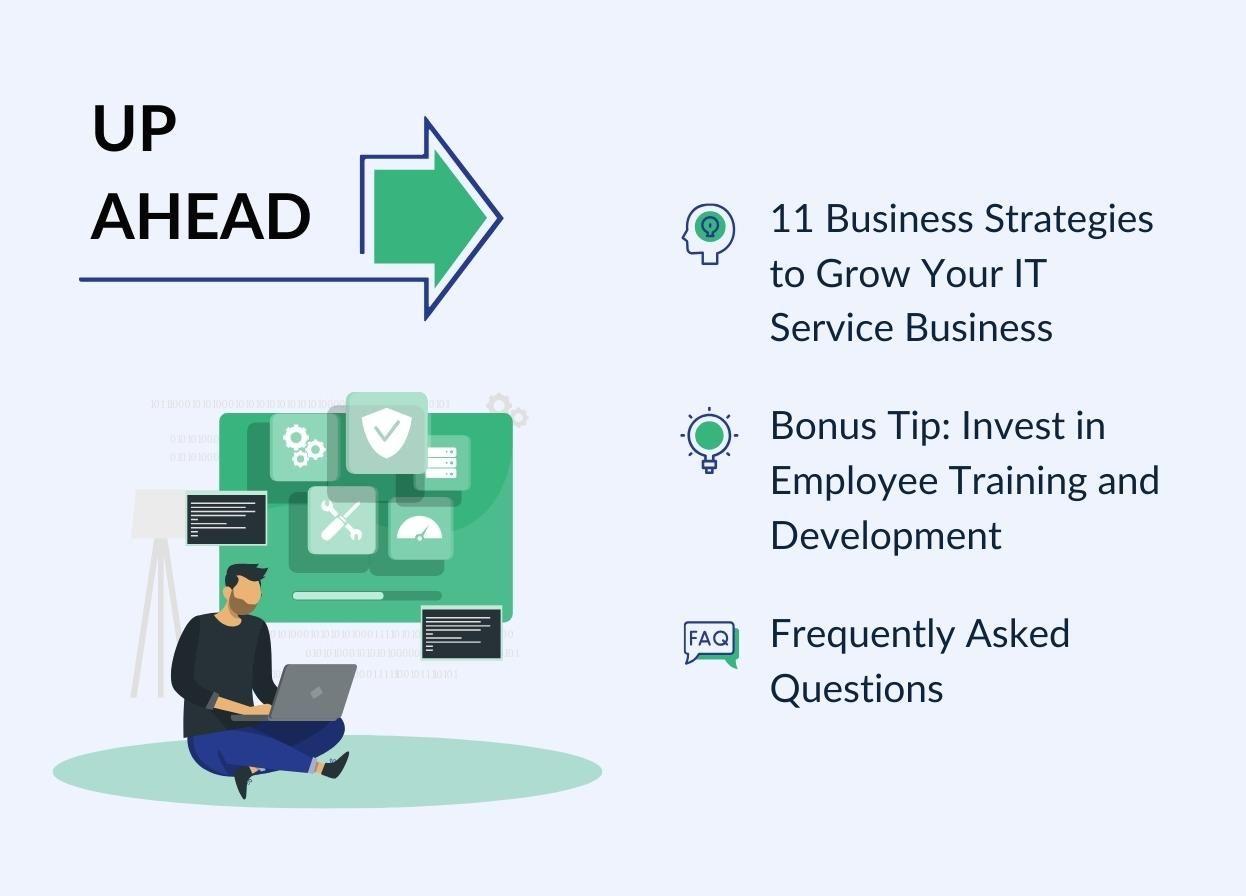

The IT service domain is constantly evolving, and you need effective growth business strategies to secure your position in the market. If Amazon and Microsoft are targeting year-on-year growth, it is natural to strive to propel your business forward, too. But how can you do that?
Let’s explore eleven tips to grow a business that holistically helped TechWings flourish and would apply to your IT service firm in today's competitive landscape.
11 Business Strategies to Grow Your IT Service Business
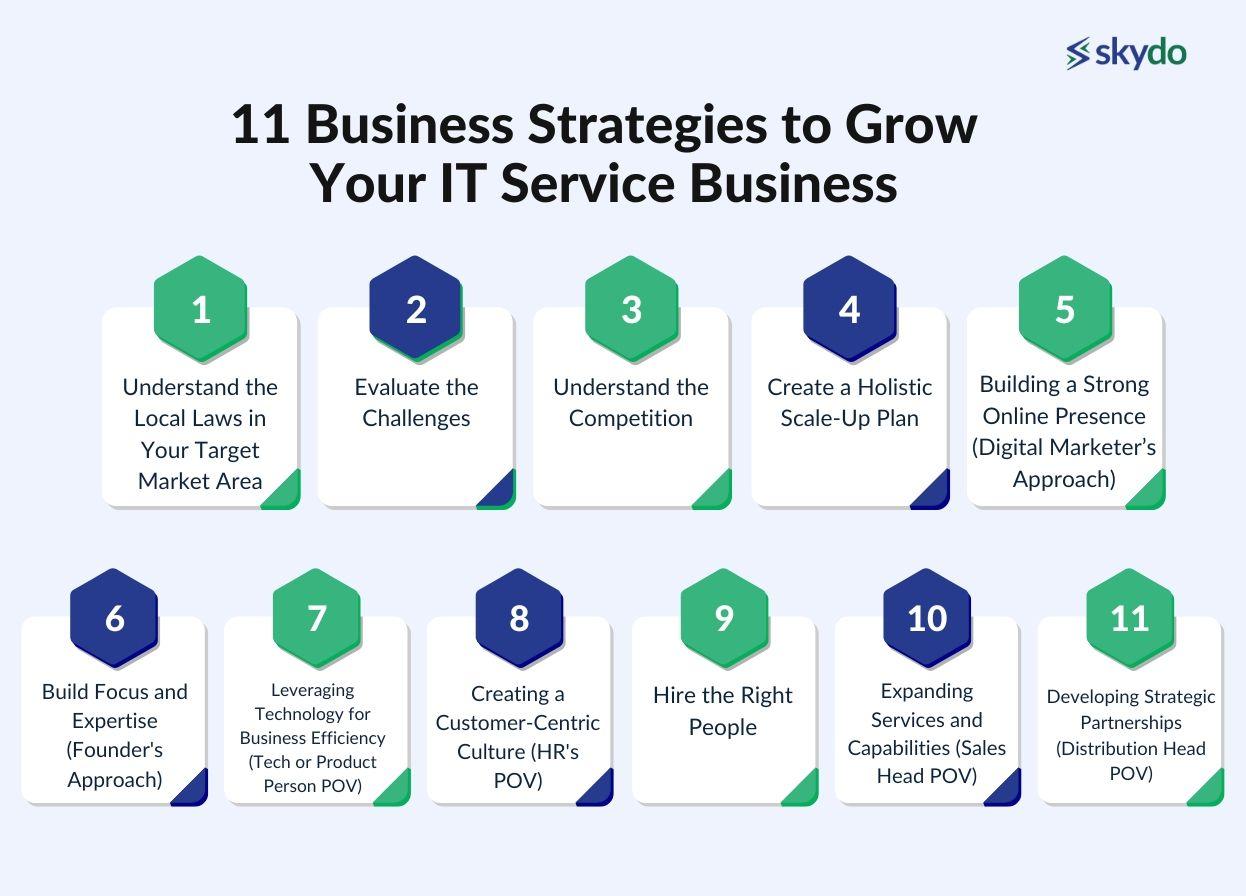
#1: Understand the Local Laws in Your Target Market Area
In service-based businesses, comprehending and adhering to local laws is a critical but often overlooked initial step. Here are some business strategies for understanding local laws in your target market area.
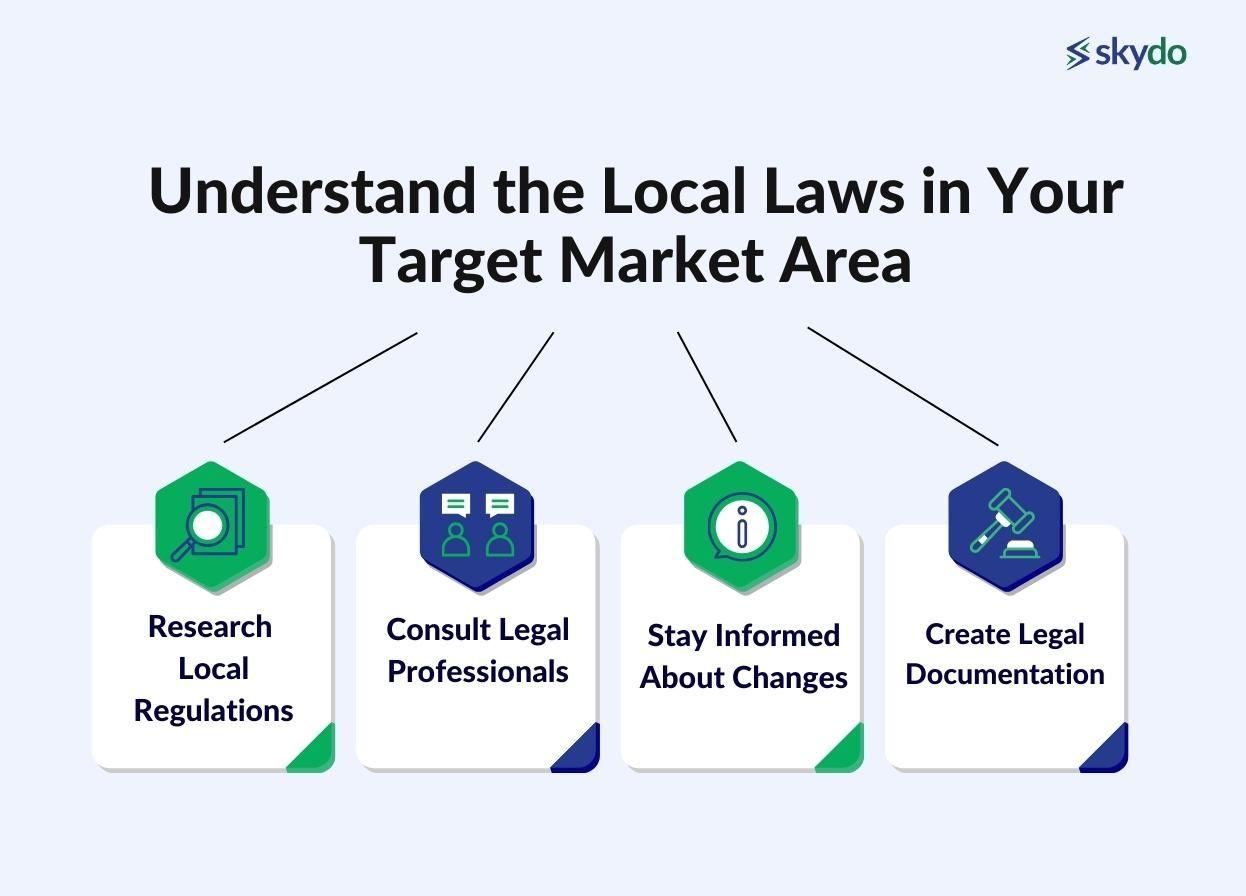
- Research Local Regulations: Investigate local, state, and national laws relevant to IT services. Understand licensing requirements for IT professionals and businesses. Be aware of data protection and privacy laws that may impact your services.
- Consult Legal Professionals: Seek advice from local legal experts or business consultants specialising in IT services. Establish a relationship with an attorney who can guide you through legal complexities.
- Stay Informed About Changes: Regularly monitor legal updates and changes in regulations. Subscribe to relevant newsletters, attend seminars, or join industry associations to stay informed.
- Create Legal Documentation: Develop contracts and service agreements that comply with local laws. Include clauses addressing data protection, confidentiality, and compliance with industry standards.
#2: Evaluate the Challenges
To foster the growth of your IT service business, identify market trends, competition, and technological shifts impacting your industry. Understand client pain points and tailor solutions accordingly.
Conduct a SWOT analysis to assess internal strengths and weaknesses. Addressing challenges head-on enables strategic planning, enhancing your business's adaptability and resilience. Embrace a proactive mindset to anticipate and overcome obstacles, positioning your IT service business for sustained growth in a dynamic and competitive landscape.
#3: Understand the Competition
Analysing your competitors is essential for positioning your IT service business effectively. Here's how to understand and leverage your competition:
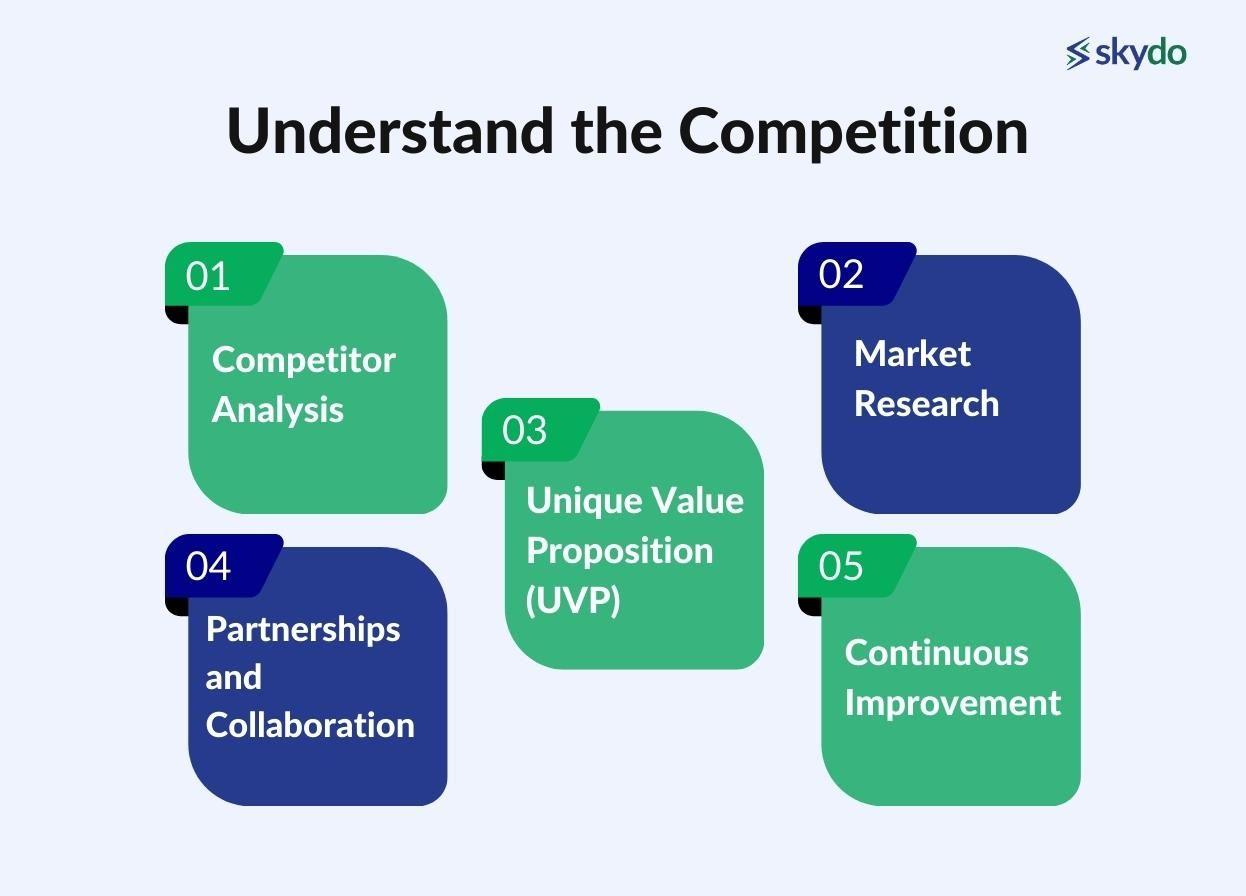
- Competitor Analysis: Conduct a thorough analysis of your competitors. Identify their strengths, weaknesses, target markets, and pricing strategies. Use this information to differentiate your services and find opportunities to outperform them.
- Market Research: Stay informed about market trends and customer preferences. Understand the evolving needs of your target audience and adapt your services accordingly to stay ahead of the competition.
- Unique Value Proposition (UVP): Clearly define your unique value proposition. Communicate what sets your IT services apart from competitors and why potential clients should choose your business.
- Partnerships and Collaborations: Explore opportunities for partnerships with complementary businesses. This can help you expand your service offerings and reach a broader audience.
- Continuous Improvement: Regularly assess and enhance your services based on customer feedback and changes in the competitive landscape. Being agile and responsive to market dynamics is key to staying competitive in the IT industry.
#4: Create a Holistic Scale-Up Plan
To ensure the success of your business expansion, it is important to develop every factor that contributes to your success. This includes your operations team, quality assurance team, legal team, management, and all other aspects of your business.
To meet the demands accompanying expansion, every department needs to grow and improve. You mustn't leave any department stagnant. Your new customers will expect the same level of service that you provide to your regulars.
Therefore, it is crucial to ensure that every team meets your high standards, even with the increased workload. A subpar performance by any team can lead to a negative impact on your brand and, ultimately, your profits. Whether you are diversifying, launching a new product line, or entering a new market, make sure that the rest of your company supports your new direction.
#5: Building a Strong Online Presence (Digital Marketer’s Approach)
Without a strong online presence, IT service businesses will neither reach a wider audience nor attract potential clients. The simplest ways to maximise your reach include the following.
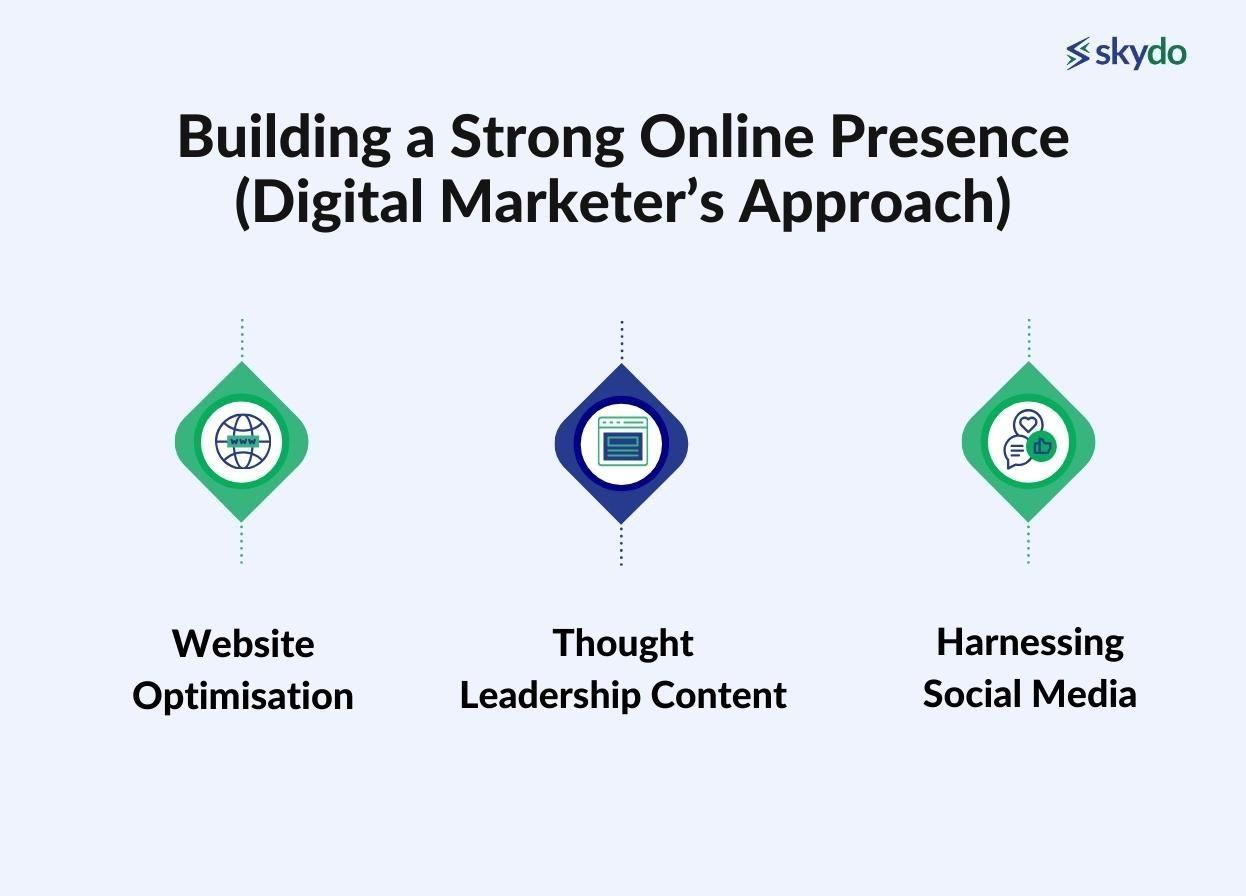
- Website Optimisation: Ensure your website is user-friendly, mobile-responsive, and optimised for search engines. A well-structured website encourages visitors to explore your services. Investing in Search Engine Optimization (SEO) goes a long way, especially when combined with building high-quality backlinks for your website, which boost visibility and authority in search results.
- Thought Leadership Content: Maintain a blog section where you regularly publish informative and valuable content related to your expertise. The more helpful you are to the reader, the higher their regard and trust in you. Share industry insights, trends, and practical tips to position your business as a thought leader.
- Harnessing Social Media: Go beyond Facebook and Instagram. Utilise other social media platforms, like LinkedIn, Twitter, YouTube, etc, to distribute your content. Share your blog posts, client success stories, and updates in Slack and Discord groups to build brand awareness and foster a community. You can also integrate QR code ROI into your content strategy, making it easy for users to access exclusive resources, landing pages, or event links directly from physical or digital touchpoints.
Also consider offline promotions to build a sense of relatability. When promoting offline materials such as flyers, make sure to design them in the standard flyer size so they’re easy to share digitally or in print alongside your online campaigns.
As per Hubspot, 60% of marketers say that inbound (SEO, blog content, etc.) is their highest quality source of leads. Seek guidance from marketing experts and leverage their expertise to craft compelling digital marketing strategies that align with your business objectives.
#6: Build Focus and Expertise (Founder's Approach)
Instead of being a jack-of-all-trades, focus on mastering one or two domains within the IT service industry and grow business on those. It’s time to go beyond a niche - carve yourself a super-niche.
Instead of being a development company, try becoming a development engine for VR games. Similarly, you can narrow down to being a cybersecurity consultant only for fintech startups participating in the regulatory sandbox.
Adopt the “T” approach, where you specialise deeply in specific services while broadly understanding related areas. Although this sounds counter-intuitive, establishing a niche enables you to–
- Offer Unparalleled Quality: By concentrating on a niche, you can deliver exceptional services, gaining a reputation for excellence that attracts more clients.
- Differentiate Your Business: Specialisation sets you apart from competitors, making it easier for potential clients to recognise your unique value proposition.
This focus helps you build a moat that increases the barrier to entry in your business category - a much-needed competitive advantage.
#7: Leveraging Technology for Business Efficiency (Tech or Product Person POV)
Knowing that incorporating the right tools can significantly improve your IT service business's efficiency and productivity, they often ignore their internal tech stack the most. Consider the following business strategies.
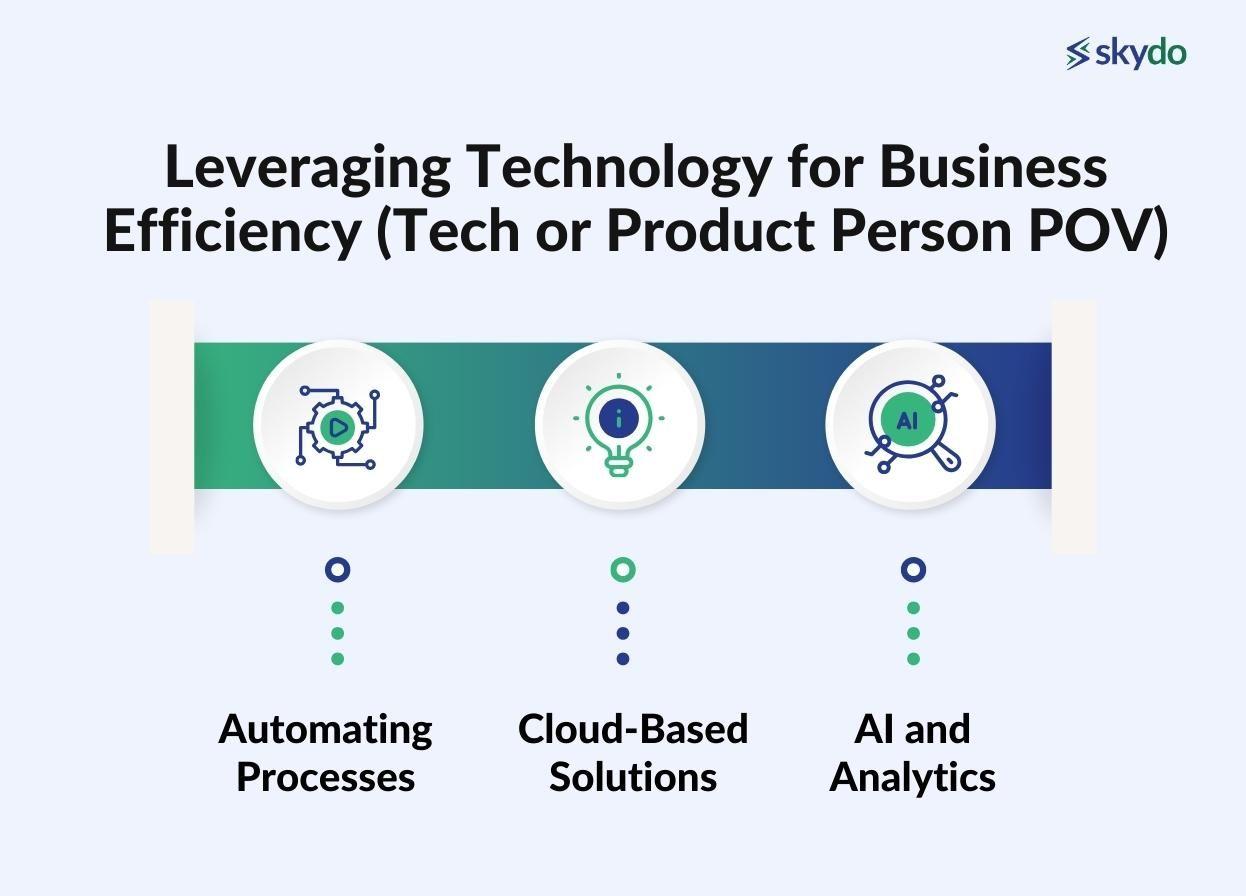
- Automating Processes: From project management to client updates to testing and feedback, there are enough SaaS products/automation tools to streamline repetitive tasks, freeing up your team's time for more strategic endeavours.
- Cloud-Based Solutions: From a simple Google Doc to complex web apps, cloud-based solutions save a lot of time by simplifying internal communication through collaboration. Embrace cloud-based services to enhance scalability, data security, and cooperation among team members and clients.
- AI and Analytics: Zoho Books (and similar tools) automate your accounting reports. On the marketing side, generative AI tools can help ease the bandwidth. Almost every ERP tool gives you custom analytics. Leverage AI and such analytics to understand what’s going wrong, make data-driven decisions, and make your business more efficient.
#8: Creating a Customer-Centric Culture (HR's POV)
Customers are your business’s heart, the ‘why’. They are the reference point for all decisions. To foster loyalty and advocacy, train your team to develop a customer-centric culture, which includes the following.
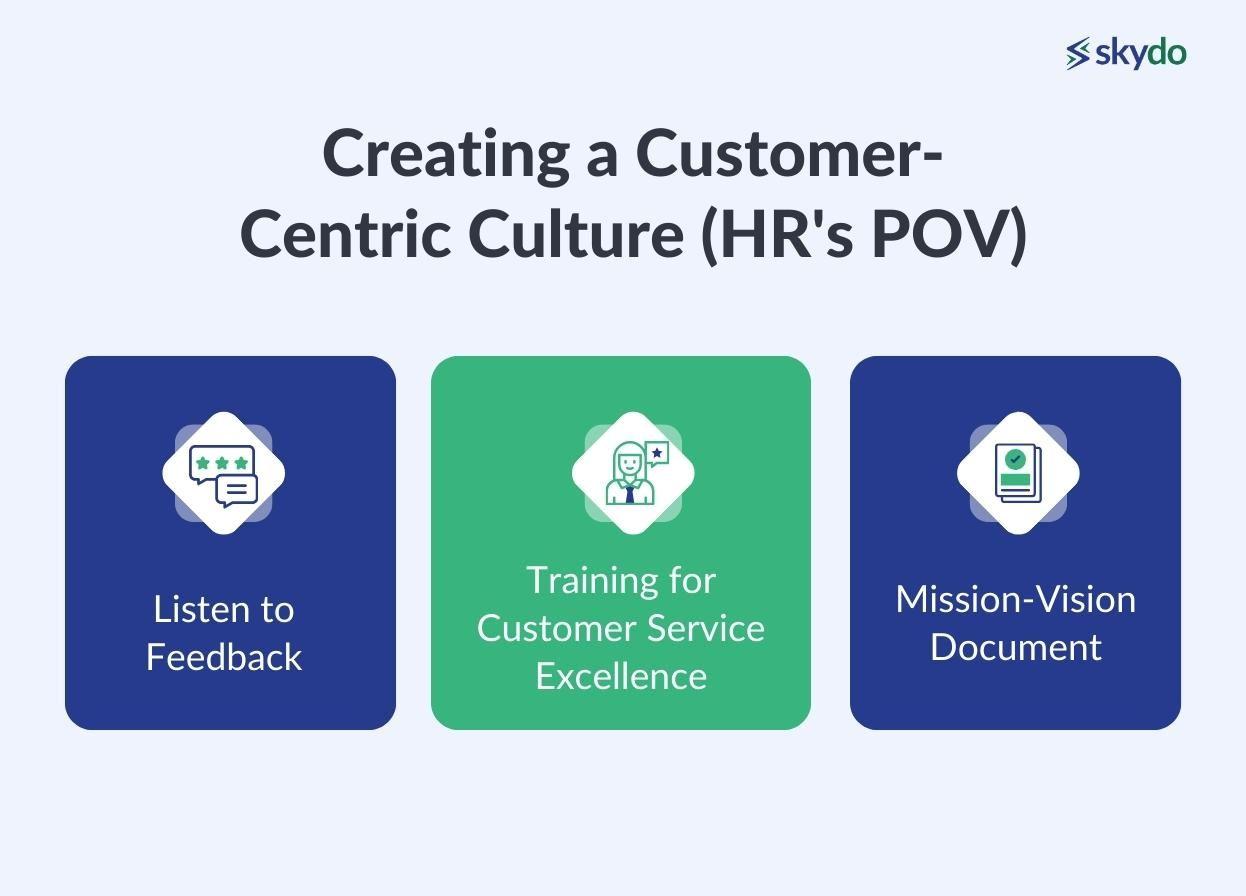
- Listen to Feedback: Employees will probably listen to bosses more than customers; change that. Implement systems to gather and analyse customer feedback and continuously urge team members to improve their services based on customer needs.
- Training for Customer Service Excellence: Amazon has become a gold standard in customer service because they provide comprehensive training to their team and empower the tele-support team to make important decisions. Instead of ‘I’ll have to speak to my manager about this,’ their customer service team issues refunds, changes order status, etc.
- Mission-Vision Document: While creating a mission-vision document about exceptional service is great, knowledge is a leaky bucket. To ensure all employees align with these core values, remind them at least twice a month. Publicly recognise people who uphold and practice these values.
Do remember: culture is repeated behaviour. The more you practice customer-centricity, the more strongly it becomes a part of your culture.
#9: Hire the Right People
In a service-based business, the key to success lies in hiring the right people to ensure exceptional client service. Because your clients don't just buy what you offer; they invest in the people who make it happen. So, the ultimate game-changer – hiring the right folks.
While technical prowess is vital, it's equally essential to prioritise soft skills such as communication and organisational abilities. The challenge often lies in finding candidates whose mindset and attitude align seamlessly with your team dynamics and overarching business objectives.
Even if local talent falls short, fear not the prospect of venturing online to build a remote team. In today's interconnected world, virtual collaboration has become an increasingly viable option. The adage "people buy from people they like" underscores the importance of cultivating a team capable of delivering expertise and creating positive customer interactions.
#10: Expanding Services and Capabilities (Sales Head POV)
There are two ways to increase business: sell to newer clients or sell more to existing clients. Diversifying your service offerings helps in both. Upselling opens new revenue streams from existing clients, while new offerings also mean venturing into newer markets.
But before launching new features, products, or services, consider the following steps:
- Market Research: David Ogilvy, the man behind growing many brands, once remarked, “...people who ignore research are as dangerous as generals who ignore decodes of enemy signals.” Trust data just as much as you would trust your gut. Start by identifying emerging trends to uncover potential service opportunities.
- Calculated Risk-Taking: While it is impossible to be 100% accurate, do your best to assess the risks associated with new offerings. Do you have the plan to build, integrate, and market it? Build a team to manage this. Most importantly, ensure that it aligns with your expertise.
Balancing calculated risk with market potential can lead to growth and success.
#11: Developing Strategic Partnerships (Distribution Head POV)
As a business owner, you understand the importance of sales. But your sales team goes beyond your ‘on-payroll’ sales team. Strategic partnerships can fuel your IT service export business's growth by broadening your reach and accessing new resources.
Consider insurance companies. They not only have their branches with salespersons but also have an online portal to buy policies. Going beyond this, they enter into partnerships with corporate agents, banks, brokers, and influential individuals to sell products. You can do the same and go beyond.
- Target Complementary Businesses: Coffee roasters can promote cup manufacturers, UI agencies can promote web developers and data storage companies can cross-sell cybersecurity solutions. It adds value to businesses and their customers. Look for partners whose services complement your own and grow together.
- Collaborate on Projects: This starts with the simple things: a front-end and a back-end expert working together on a web project. Such synergies are often dubbed ‘2 +2 = 5’ because when you take on projects together, your combined capabilities add much greater value for the client.
- Networking and Relationship Building: Attend industry events and conferences to network with potential partners, establishing connections that can lead to meaningful collaborations.
Bonus Tip: Invest in Employee Training and Development
Here are some business strategies for understanding local laws in your target market area.
An army is only as strong as its weakest soldier. You must nurture a skilled and motivated workforce. Their effectiveness is important not just to your business and customers but also to their personal growth. Invest in your employees' growth through two fronts.
- Developing Hard Skills Through Certifications and Training: What should they learn about the domain? Which weak spots should they practice on more? Which certificate will make them feel good about themselves? Support employees in obtaining relevant certifications and training to enhance their expertise and stay updated with industry developments.
- Nurture Soft Skills Through Leadership Programs: Develop leadership programs to groom future leaders, teaching them how to deal with people, where to back off, and the mental models to build. These collectively create effective management and happier employees.
Your IT service company may position itself for long-term success in a dynamic and competitive industry by implementing eleven core ideas and investing in personnel training. A customer-centered strategy, technical innovation, and strategic alliances will further strengthen your company's expansion and revenue generation capacity. Remember that success in the always-changing IT service sector depends on ongoing adaptation and improvement.
Frequently Asked Questions
Q1. What is an IT service strategy?
Ans: An IT service strategy outlines the approach and goals for delivering information technology services within an organisation. It involves planning, implementing, and managing IT services to meet business objectives and improve overall efficiency.
Q2. Why is it important for service providers to understand patterns of business activity (PBA)?
Ans: Understanding Patterns of Business Activity (PBA) is crucial for service providers to align IT services with the dynamic needs of the business. Analysing PBAs helps anticipate demand, optimise resources, and ensure IT solutions are aligned with business goals.
Q3. How to start an IT service business?
Ans: Starting an IT service business involves defining a niche, creating a business plan, obtaining necessary certifications, setting up infrastructure, and marketing services to target clients.
Q4. How to start an IT service business?
Ans: Initiating an IT service business requires defining a niche, developing a business plan, obtaining necessary certifications, establishing infrastructure, and marketing services to target clients effectively.
Q5. How to most effectively run an IT service for a business or increase business growth?
Ans: Effectively running an IT service for a business involves robust communication, continuous monitoring, efficient problem-solving, staying updated with technology trends, and ensuring a proactive approach to prevent potential issues.
Q6. How do I get clients for IT services?
Ans: Getting clients for IT services involves networking, building an online presence, showcasing expertise through case studies, testimonials, and certifications, offering competitive pricing, and providing excellent customer service to build trust and attract new clients.
Q7. How to improve business growth?
Ans: To improve business growth, implement effective strategies like diversifying products, expanding target markets, and enhancing customer experiences. Invest in digital marketing, adopt innovative technologies, and focus on employee development. Regularly analyse and adapt your business plan to stay competitive and meet evolving market demands.
Q8. How can I grow my business?
Ans: Grow your business by diversifying products, exploring new markets, and prioritising customer satisfaction. Leverage digital marketing, adopt technology, and invest in employee training. Regularly assess your business plan to adapt to market changes, ensuring long-term success.












